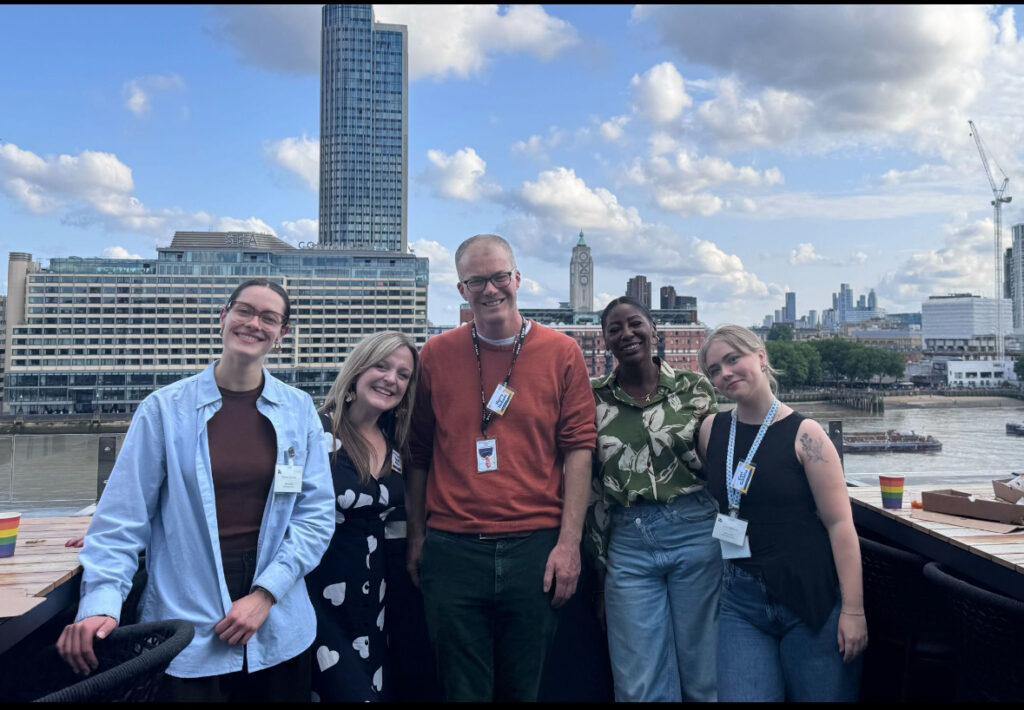Developing practice-based case studies

We recently held a member co-working session to discuss practice-based case studies. The session, led by Ingrid Abreu Scherer (What Works Wellbeing) and Dr. Helen MacIntyre (Campaign to End Loneliness), was enriched by insights from Deanne Dixon (Co-op Foundation). A huge thank you to all who attended and contributed to the discussion. This blog post summarises the main takeaways and insights from our conversation.

What are case studies?
The term “case study” is interpreted differently across different fields and contexts. In the context of our discussion, a practice case study represents a detailed narrative focused on a specific activity, intervention, or project undertaken by your organisation. Unlike personal stories or academic investigations, practice case studies focus on how and why specific activities were done, the individuals involved, the sequence of events, and the outcomes and learnings derived from the experience.
Why do case studies matter?
Case studies are a useful tool for capturing real-word experiences of project delivery. They let us see how projects were delivered by practitioners, helping us to understand how activities lead to outcomes. Benefits of developing case studies include:
- They encapsulate lessons learned from on-the-ground activities, providing a rich source of practical insights.
- They present complicated information in a digestible format, making it readily available to a wide audience.
- For organisations of any size, especially those with limited resources for evaluation and reporting, case studies offer a feasible method to consolidate and share learnings.
- When used by funders and commissioners, a standardised case study format allows for the analysis of different projects, aiding understanding of what works.
Developing your own case study
During the session, we discussed steps and considerations for developing our own case studies. These insights build on the Guide to Effective Case Studies and the accompanying case study template to help you get started.
- Clarify your purpose. Understand why you’re writing the case study. Is it to reflect on a completed project, share a work-in-progress, or introduce a novel approach?
- Choose the right author. The writer’s perspective significantly influences the case study’s tone and authenticity. Ensure they have a deep understanding of the project and can discuss its nuances critically.
- Gather comprehensive data. At the heart of every case study is the story of what actually happened. However, the learning derived from these experiences truly enriches the case study. Employ a variety of data sources, such as feedback forms, interviews, focus groups, and surveys, to add richness to the account.
- Incorporate multiple perspectives. Diverse viewpoints enrich the narrative, offering a well-rounded understanding of the project’s impact. Involving participants in the development of case studies ensures their voices and perspectives are accurately represented. However, not all projects may suit direct participant involvement in writing due to time constraints or the sensitivity of information. In such cases, gathering feedback or insights via the methods outlined above can still ensure their voices are heard.
- Context is key. The backdrop against which a project unfolds plays a pivotal role in understanding its outcomes. Providing a detailed context of the geographical, social and economic factors helps readers grasp why specific approaches were effective in certain environments or among particular groups.
- Include challenges and failures. Sharing what didn’t go as planned offers valuable lessons and adds credibility to your story. This can also be really helpful for funders to see what is and isn’t working.
- Share widely. Disseminate your findings across your network and beyond to maximise impact and encourage collective learning. A common worry is that case studies might not be effectively utilised by funders, stakeholders, or the wider community. Engaging with these audiences to understand how they prefer to receive and use such information can increase the usefulness and impact of case studies.
Continue the discussion
By offering a structured yet flexible format for reflection and analysis, case studies not only enhance internal understanding and decision-making, but can also contribute to our collective understanding of what works in addressing loneliness. Whether you’re a grassroots organisation or part of larger entity, case studies can amplify the impact of your work and foster a culture of continuous learning and improvement.
To access the further reading from this co-working session, and to continue the discussion on loneliness evaluation methods, visit the Evaluation Group.





This might be of particular interest to you @Sarajoharrison @griv